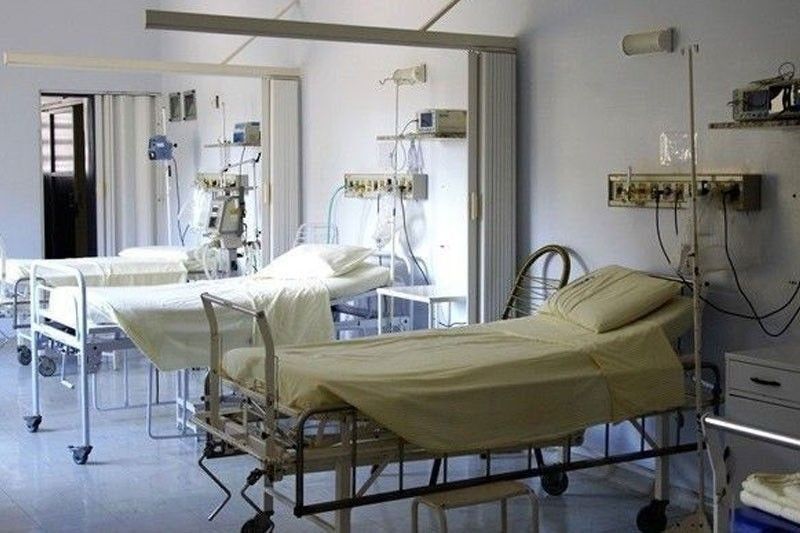‘Metro Manila not running out of hospital beds’

ICU beds full in 11 hospitals
MANILA, Philippines - Malacañang described as “fake news” yesterday reports that Metro Manila’s healthcare system was under severe strain amid the recent spike in coronavirus cases.
“The critical care utilization in Metro Manila and that includes hospital beds, ICU (intensive care unit) beds, mechanical ventilator and isolation beds is at 63 percent or still at moderate risk,” presidential spokesman Harry Roque said.
“We are clarifying the fake news that our hospitals no longer have hospital beds. That’s not true,” he said.
Earlier reports said recent record single-day numbers of new COVID-19 cases in Metro Manila are straining the capacity of hospitals, forcing some to refer patients to other facilities.
Health Undersecretary Maria Rosario Vergeire said in a press briefing yesterday that at least 11 hospitals in Metro Manila reported a “100-percent utilization rate of their COVID-dedicated ICU beds” last week, referring to intensive care unit beds assigned mainly for COVID patients.
These hospitals are the Veterans Memorial Medical Center, UST Hospital, University of Perpetual Help Dalta Medical Center, Tondo Medical Center, AMOSUP Seamen’s Hospital, Philippine Children’s Medical Center, Metro North Medical Center, Las Piñas Doctor’s Hospital, Delos Santos Medical Center, Chinese General Hospital and Medical Center, and Capitol Medical Center.
Yesterday, the Department of Health met with the administrators of hospitals and temporary treatment and monitoring facilities in Metro Manila to discuss the situation.
According to Vergeire, not all hospitals comply with the DOH Administrative Order 2020-0016, which mandates the allocation of at least 30 percent of all public and private hospital beds for COVID-19 patients.
“The reported utilization rates do not reflect the entire capacity of hospital, hence, from the general wards, we can still expand through health human resources … There is still room for every hospital to expand more,” she said.
During the meeting, the DOH asked the hospitals to “be prepared to implement an additional 20-percent surge capacity if and when needed.”
“We are ramping up our health system capacity, in part the equipping of in-patient beds to be ready for critical and severe cases,” Vergeire said.
Harry Roque Jr. said tightening the quarantine protocols is “still possible” if the COVID-19 cases continue to increase and if the country’s health facilities are filled up.
“If the situation worsens and we run out of critical care capacity or the case doubling rate becomes fast once again, we have no alternative. That is why we are making an appeal to our countrymen. If we return to a stricter quarantine (level), we may lose our livelihood. Let us now use our weapons that are proven effective in slowing the spread of the disease,” Roque said, referring to safe distancing, staying at home and proper hygiene.
Aside from the hospitals that reported full capacity, Vergeire cited three other hospitals that are nearing capacity of their ICU beds for COVID cases—the Lung Center of the Philippines (97 percent), East Avenue Medical Center (89 percent) and UERM Memorial Medical Center (83 percent).
“When you talk about percentage of beds that had been occupied already, this is not equivalent to the entire bed capacity of the hospital. We are just referring to the dedicated beds for COVID patients,” she pointed out.
A July 5 data of the Department of Health (DOH) showed the National Capital Region (NCR) as having 1,482 new cases the past week while Central Visayas had 1,188 new cases.
The other top regions for COVID-19 are Calabarzon with 223 new cases in the past week, Central Luzon with 42; Western Visayas with 41 and Northern Mindanao with 36 cases.
It also showed that in the past week, Cebu City had 469 new cases, followed by Cebu province with 234; and Lapu-Lapu City with 176. Quezon City and Mandaue City had 101 each while Manila had 93.
Vergeire noted though that while the rising cases of COVID-19 is a cause of concern, “we can still do something about it” as she urged the public to continuously practice infection prevention and control, which include physical distancing, hand washing or hand disinfection and the wearing of masks.
As of July 5, the critical care utilization rate in NCR hospitals was at 63.41 percent; isolation bed utilization, 63.41 percent; ICU bed utilization, 48.61 percent; and mechanical ventilators utilization, 29.80 percent.
Last Saturday, the Chinese General Hospital and Medical Center (CGHMC) announced that its “COVID wards are running at full capacity with more severe cases than those seen last March.”
“While we gladly accept your admissions, we would prefer that you refer your COVID patients to other institutions,” stated a letter addressed to all of CGHMC consultants and signed by medical director Samuel Ang as well as president and chief executive officer James Dy.
The hospital assured the public that it is “pursuing this program of limiting the admitted COVID patients to a manageable level to ensure that we deliver the health care expected of this institution while protecting our medical manpower and resources.”
Case clustering
Almost 400 barangays in Metro Manila and Cebu City are being closely watched for clustering of coronavirus cases, a health official said yesterday.
Vergeire said 64 barangays in Cebu City and 314 barangays in the NCR reported to have clusters of cases. Clustering refers to an area that has two or more cases.
She added that the DOH is also closely monitoring three “closed settings” in the NCR, including the Metro Rail Transit (MRT) whose 172 workers have already contracted the virus as of July 5.
“Many other areas are being strictly monitored because they used to have no cases, but now they are seeing cases,” Vergeire declared during the DOH media forum.
Aside from those barangays, the DOH is also keeping a close watch at the “top six” areas, which documented a high number of cases. These are Cebu City, the entire Cebu province, Lapu-Lapu City and Mandaue City, all in Central Visayas; and Quezon City and Manila in NCR.
Vergeire advised the public to avoid going to areas where there are community transmission of cases to prevent the virus from spreading.
“The basic rule while we are having quarantine – regardless of (quarantine) levels – is if it is not really necessary to go out, you stay at home… Don’t go to areas with community transmission,” she said, noting that those who travel to such areas are “supposed to (undergo) quarantine because you are coming from a high-risk area.”
- Latest
- Trending


























